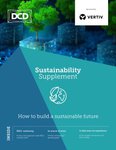The recent United Nations climate change report stresses the vital importance for developed countries to step up and commit to reaching their net zero goals as close to 2040 as possible. Businesses, crucially, play a central role in helping nations to meet these goals, and, for many, it will involve completely transforming operations.
But efforts must go beyond what a company has direct control over. Increasingly, there is mounting pressure to look beyond Scope 1 (direct emissions), and consider Scope 2 (indirect emissions from the generation of purchased energy) and Scope 3 (all indirect emissions within the supply chain).
This is not only important from an environmental and societal perspective but also from a regulatory and reputational standpoint. For example, April 2022 saw the UK government impose mandatory climate-related financial disclosure – in line with recommendations from the Task Force on Climate-Related Financial Disclosures (TCFD) – on over 1,300 of the country’s largest businesses. This number included large traded companies, banks, and insurers, as well as private companies with over 500 employees and a turnover of £500 million ($642m).
While it is currently only the largest organizations that are legally required to report on their energy usage and emissions, it won’t be long until all organizations will have to comply. This means there is no time to waste. Now is the time for organizations to take action to decarbonize supply chains to stay ahead of the regulatory curve.
Managing scope 3 emissions to unlock potential
According to the Carbon Disclosure Project, supply chain emissions (upstream scope 3) are, on average, 11.4x greater than operational emissions (scopes 1 & 2). Therefore, tracking scope 3 emissions allows businesses to identify areas in which they can decrease energy use and, therefore, reduce emissions along the whole supply chain.
Pure procurement is key to lowering emissions and promoting sustainable practices. By focusing on sourcing products and services from suppliers with strong environmental credentials, organizations can significantly reduce their indirect carbon footprint and contribute to a greener future. Through pure procurement, companies prioritize suppliers that align with their sustainability goals, ensuring that the entire supply chain operates in an environmentally responsible manner. Ultimately, the more companies can understand where their emissions are coming from, the better decisions they can make to reduce them.
In fact, many multinationals, such as the BMW Group and Unilever, have pledged to work only with suppliers who adhere to ESG policies. But this can be a rather exclusionary approach. At BJSS, we embrace the responsibility of guiding our suppliers on their journey towards reducing emissions. By conducting comprehensive onboarding surveys, we actively collect valuable information from our suppliers, allowing us to develop personalized emission reduction plans.
There is clearly a huge potential for enterprise organizations to lead the charge. When one organization addresses its scope 3 emissions impact, it demands the same from its suppliers. It trickles through the supply chain and creates a wider impact for large-scale, global decarbonization.
Data holds the key
While being more selective about supply chain partners is a crucial step to reducing emissions, organizations must continue to monitor progress to realize efficiencies and create positive change. After all, the last few years have reminded us how fragile our supply chains are, and just how quickly they can be disrupted.
Organizations, therefore, need to set sustainable and realistic KPIs for their supply chains and keep on top of measurements. Monitoring, reporting, and verifications systems can be utilized to track scope 1, 2, and 3 carbon emissions and help procurement teams understand the carbon impact across all operations.
A key source of supply chain data is Internet of Things (IoT) technology. By using smart sensors to track the real-time journey of assets – including information on their location and the conditions and state of storage – organizations can be alerted to any inefficiencies that are leading to increased emissions or product waste and adjust accordingly.
Data can also be used to support better business decisions. For example, digital twin technology, which provides a digital representation of a physical product, system, or process, can be applied to supply chains to gather data on potential future outcomes.
Digital supply chain twins are increasingly being used to examine supply chains and test the impact that any updates will have, without having to risk any negative fallouts in actuality. Armed with rich data insights, organizations can approach big decisions around supply chain decarbonization with confidence.
No time to waste
Monitoring and reducing scope 3 emissions is not only good for the planet; it’s just good business. Reviewing your supply chain can uncover opportunities to improve efficiencies and reduce costs. With clients, investors, and governments increasingly demanding it, the businesses that don’t take measures to implement the right monitoring tools will put themselves at risk.
Now is the time to decarbonize your supply chains and reduce your carbon emissions in order to stay relevant and be a part of the global decarbonization agenda.








